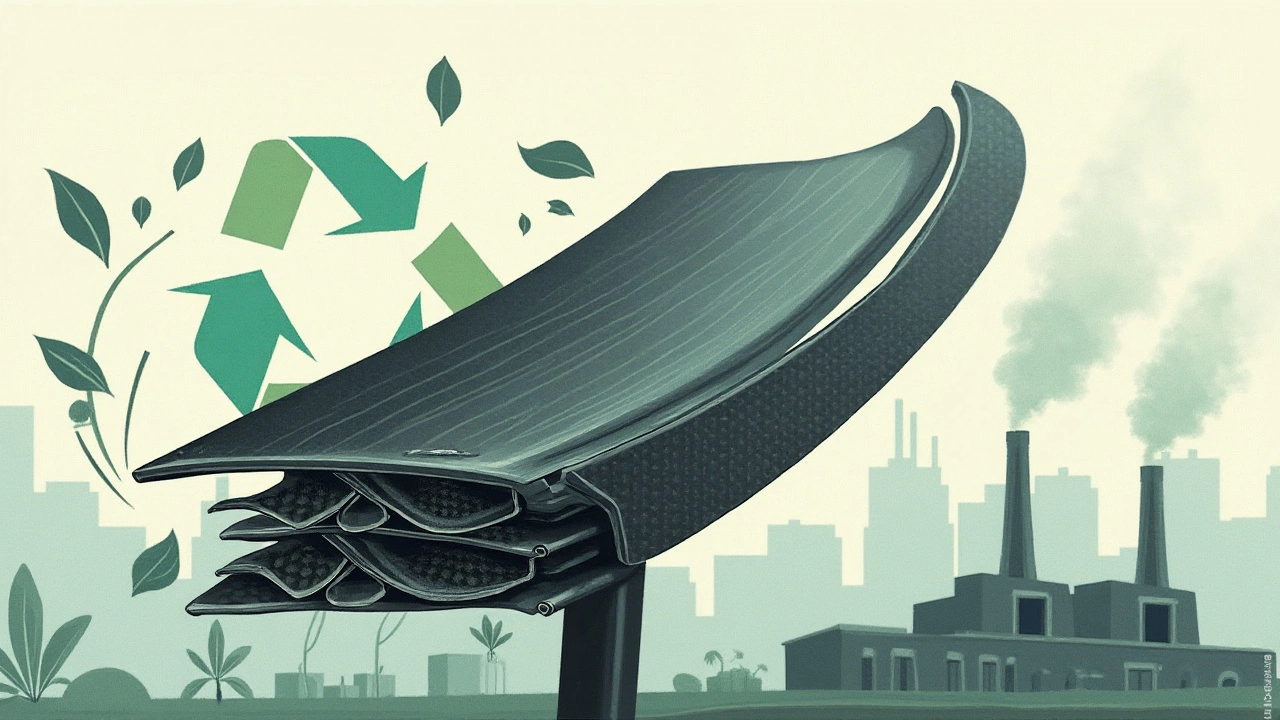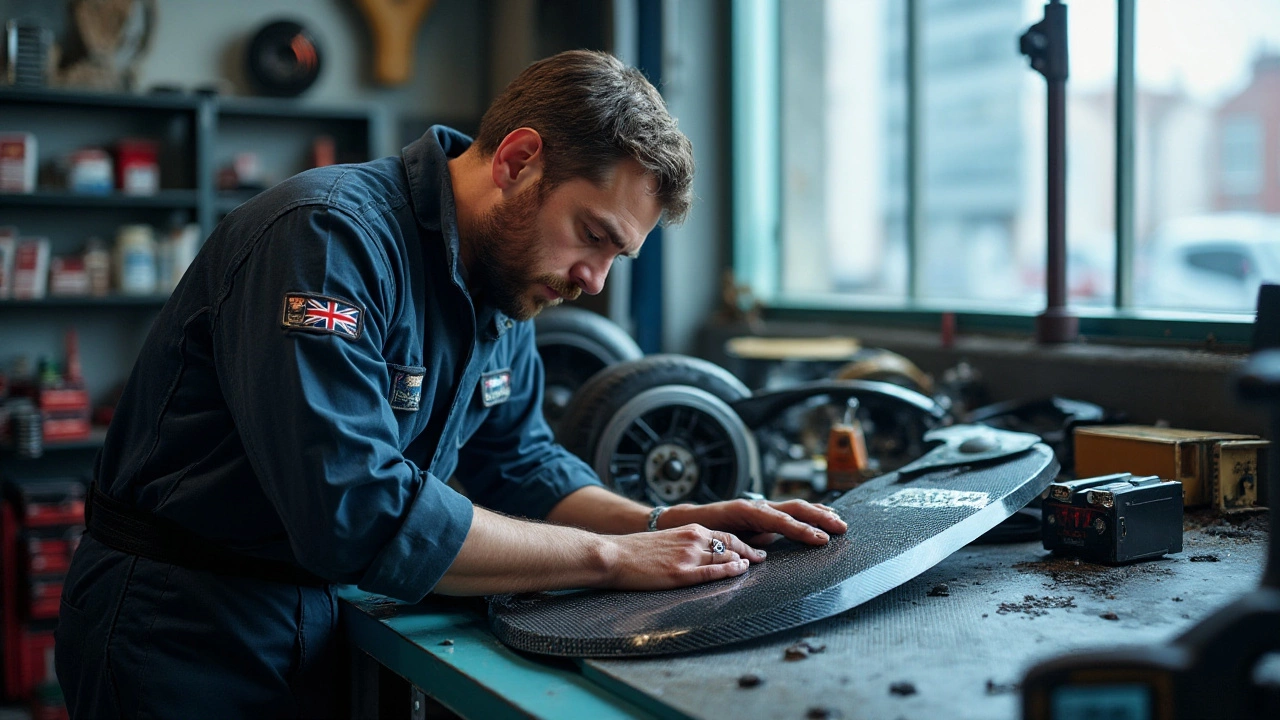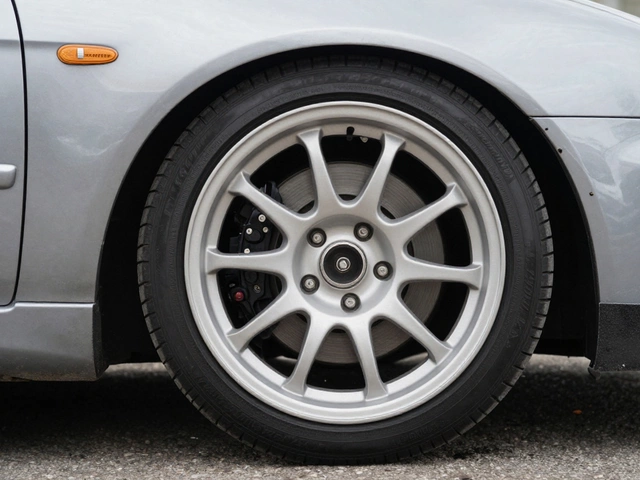Carbon fiber spoilers have become an emblem of modern car aesthetics and performance. Their sleek design and unparalleled strength offer an edge in the world of high-speed racing and luxury vehicles. But beneath their polished surface lies a set of challenges that both the industry and consumers must grapple with.
While the material possesses enviable properties, it's not without its pitfalls. From the intricate and costly manufacturing process to environmental and durability concerns, carbon fiber has its fair share of hurdles. This piece aims to shed light on the main problem associated with carbon in the context of automotive spoilers, unraveling facts and insights that can guide both enthusiasts and industry players alike.
- Introduction to Carbon Fiber Spoilers
- The Manufacturing Process and Its Challenges
- Cost Considerations and Economic Impact
- Environmental Concerns and Sustainability
- Durability and Maintenance Issues
- Future Innovations and Solutions
Introduction to Carbon Fiber Spoilers
Carbon fiber spoilers have carved a niche in the world of automotive design, standing as a testament to how far technological advancements have taken car aesthetics and performance. These sleek appendages are not just about enhancing the visual appeal of a vehicle; they play a crucial role in aerodynamic efficiency, which makes them a staple for high-performance and sports cars. The allure of carbon fiber lies in its extraordinary strength-to-weight ratio, which is a significant factor in industries that demand both lightness and durability. Fascinatingly, carbon fiber is about five times stronger than steel and boasts a weight reduction that peaks at almost 70% less, making it indispensable in contexts where every pound counts.
Understanding why carbon fiber is highly valued means delving into the origins of this wonder material. Composed primarily of thin, crystalline filaments of carbon atoms, it was first discovered during experiments in the late 19th century. However, its true potential was only unlocked in the 1950s and 60s when chemists Raymond Bacon and William Watt refined the production process to create the tensile-strength forms we see today. Since then, it has transformed everything from aerospace to sports equipment, but perhaps its most visible impact can be seen in the realm of auto design. "Carbon fiber is what dreams are made of in the car industry," observed renowned automotive engineer Mario Andretti.
The marriage of style and functionality that carbon fiber affords is remarkable. It's like creating something out of thin air, yet with the prowess and solidity to withstand the toughest conditions.
The application of carbon fiber in car spoilers comes with several perks. Not only do these components bring a significant reduction in vehicular weight, impacting fuel efficiency positively, but they also ramp up the car's overall performance. The design of carbon fiber spoilers is meticulously engineered for precision, channeling airflow over and around the vehicle in ways that reduce drag while increasing downforce. This helps with tire grip and stability, primarily when cornering at high speeds. Despite the sizable benefits, this isn't a component reserved for the racing elite or ultra-expensive supercars anymore. Driven by growing demand, many manufacturers are exploring ways of making these advanced materials more accessible, ensuring that average car owners can also enjoy the superior performance benefits. For those who are hands-on, there exists a thriving aftermarket culture where hobbyists and auto enthusiasts can opt for custom installations, delighting in both the personal and technical satisfaction these upgrades bring.
Yet, the path to perfecting carbon fiber spoiler technology has been laden with technical challenges. The manufacturing process involves using carbon fiber-reinforced polymers that require specialized knowledge and equipment, making production complex and time-consuming. Plus, real attention must be given to quality control to ensure structural integrity, which is vital given the high-stress environments the spoilers operate in. Industry insiders note that despite these hurdles, continuous innovation and research hold promise for reducing costs while increasing durability. It’s a futuristic journey, where each step forward opens new vistas not just for car design, but potentially, new applications across different fields. The tantalizing possibility of a future where carbon fiber materials are commonplace speaks to the ingenuity and persistence of those who push the bounarie of what's possible.
The Manufacturing Process and Its Challenges
The journey of transforming raw carbon into sleek carbon fiber for automotive spoilers is as intricate as it is fascinating. It starts with acquiring the raw material, typically polyacrylonitrile (PAN), which is a synthetic polymer used in the majority of fibers. This polymer is then heated to extremely high temperatures in a process called stabilization, which alters the molecular structure and helps in forming rigid linear fibers. This initial step is critical as it lays the foundation for the fiber's characteristic lightweight and strength properties.
Subsequent to this, the stabilized fibers undergo carbonization, where they are subjected to higher temperatures in an oxygen-free environment. This stage transforms the fibers into pure carbon strands. It is not uncommon for manufacturers to maintain secrecy about the specifics of this process due to its complex and proprietary nature, allowing for optimum fiber qualities. The fibers are then treated with chemicals to enhance bonding capabilities, a step known as surface treatment, making them suitable for composite production. A protective coating is finally applied to prevent damage during further handling.
The transition from raw carbon strands to functional automotive components requires embedding these strands in a composite matrix, commonly epoxy resin. This matrix allows the fibers to retain their strength while being molded into aerodynamic shapes. However, this step introduces significant challenges. The process involves precise layering of fibers to ensure that the finished composite can withstand the physical demands of its application. Any inconsistencies during layering can result in weak points, compromising safety and performance.
The entire manufacturing narrative is not just a tale of technological prowess but also of economic weights. The process is energy-intensive, requiring specialized equipment and a skilled workforce, driving up production costs. According to a report by the Materials Engineering Association, while carbon fiber composite use in vehicles rose by roughly 20% over the last decade, the cost has restricted broader adoption. A quote from an industry expert once read, "The race to reduce costs in carbon fiber manufacturing is as fierce as any track competition." This statement succinctly highlights the ongoing battle suppliers face in pushing this material mainstream.
As automation begins to toot its horn more vigorously in manufacturing, the carbon fiber process still relies heavily on manual expertise. Whether it's engineers perfecting the mix of resin or skilled labor layering fibers, the human factor remains invaluable. While technological advancements promise to ease complexities, integrating automation without losing quality is no small feat. Industry alliances are ever-important as manufacturers seek to share innovations and reduce costs through collaborative approaches, ensuring they can keep revving up without breaking the bank. The combination of economic, technical, and manual challenges makes the manufacturing process of carbon fiber not only complex but a fascinating landscape of modern material science.

Cost Considerations and Economic Impact
When it comes to embracing the world of carbon fiber in automotive design, particularly in producing spoilers, cost emerges as a formidable challenge. The allure of carbon fiber spoilers is undeniable, driven by their combination of aesthetic appeal and functional efficiency. However, the financial implications cannot be overlooked. The production of these components involves a complex manufacturing process that is not only time-consuming but also highly specialized, demanding precise engineering and resources. This complex blend of craftsmanship and technology inherently drives up costs, making carbon fiber an expensive choice. Companies often find themselves walking a fine line between achieving cutting-edge performance and maintaining financial viability.
From extracting raw carbon materials to the intricate weaving that provides its iconic strength, every step contributes to the hefty price tag. The economics of scale come into play here; while mass production might lower costs to some extent, the bespoke nature of each spoiler often means limited batches. This scarcity can create an aura of exclusivity for luxury brands, but it simultaneously presents a barrier for widespread adoption in more budget-conscious markets. As a result, many automakers reserve carbon fiber spoilers for high-end models or offer them as premium upgrades, targeting enthusiasts who prioritize performance and uniqueness. However, this segmentation can contribute to an economic divide where only a select few can afford such enhancements.
The economic impact extends beyond just the manufacturers and reaches the consumers. For car enthusiasts, the decision to invest in carbon fiber is akin to buying not just a product, but a piece of engineering art. Yet, the higher cost might mean prioritizing this upgrade over other potential improvements or maintenance tasks for their vehicle. A study from Market Watch in 2023 highlighted this trend, indicating that nearly 70% of those opting for carbon fiber spoilers do so by reallocating funds from other automotive investments. The financial layout encompasses not just the initial purchase but also involves upkeep considerations, as these spoilers require specific care to maintain their integrity and shine.
"The pursuit of perfect performance often comes with a price. Balancing cost and quality is an art in the automotive arena," remarked Greg Wood, a renowned automotive analyst.
For smaller or boutique car manufacturers, integrating carbon fiber means wrestling with budget allocations that could otherwise be directed towards research and development. Not to mention, the industry's reliance on this material can have ripple effects on supply chains, potentially inflating the cost of associated components. Additionally, as the demand for lightweight materials grows, industries outside of automotive, such as aerospace and construction, may drive prices even higher. Companies must continually explore materials science innovations and supply chain efficiencies to alleviate these economic pressures without compromising on the high standards expected from carbon fiber applications. The balancing act in the economic equation for carbon fiber presents both challenges and opportunities, paving the way for future innovations in materials technology.
Environmental Concerns and Sustainability
Carbon fiber, with its remarkable lightweight and strength attributes, might seem like a miraculous material for aerospace and automotive enthusiasts. Yet, this perception overlooks significant environmental challenges linked to its production and disposal. The environmental footprint of carbon fiber arises from its energy-intensive manufacturing process, which involves substantial electricity consumption and CO2 emissions. Critically, carbon fiber production hinges on the use of petroleum-based polyacrylonitrile (PAN), compounding its environmental impact. As demand for carbon fiber increases in sectors like automotive and wind energy, these ecological concerns are gaining urgent attention.
The path to sustainability for carbon fiber can be tangled and complex. Recycling, a common salvation for many materials, presents unique hurdles for carbon fiber. The fibers are often mixed with other materials, making separation a daunting task. Additionally, resins used in composites can hinder straightforward recycling processes. Developing efficient recycling methods is crucial, as discarded carbon fiber products lead to increased landfill waste, adding strain on already overburdened waste management systems.
Industry efforts to enhance sustainability are notable. Some companies have started tapping into alternative, more sustainable sources for manufacturing. Bamboo-based precursors and bio-derived acrylonitrile hold promise in creating sustainable carbon fiber, albeit these materials are still in their developmental stages. Progress is being made in developing closed-loop processes, where manufacturing waste and industrial scrap are reincorporated into new production cycles, reducing overall waste. Despite these advancements, achieving widespread adoption remains a hurdle due to cost and scalability concerns.
"The potential environmental benefits of bio-based carbon fibers are monumental, but we need a collaborative effort from the entire industry to transform research into reality," remarks Dr. Emily Zhao, a renowned materials scientist in an interview with Green Tech Journal.
Alongside recycling efforts, reducing the carbon footprint in production is a tangible goal. Innovators in the field are investigating low-energy methods for creating fibers and experimenting with renewable energy sources to power manufacturing operations. Additionally, researchers are evaluating the impact of using lighter components, aiming for a reduced weight without compromising structural integrity. Such innovations could significantly lower emissions while retaining the product's advantageous properties.
Ultimately, the challenge of sustainability in carbon fiber will require systemic shifts in both production and consumption. Consumer awareness and demand for greener products can drive companies to invest in more sustainable practices. Policy changes, valuable incentives, and shared industry standards can support this transition. While the road to entirely sustainable carbon fiber spoilers remains a journey, meaningful steps are being taken. This evolution could eventually lead to innovations that hold the same promise for ecological harmony as carbon fiber's structural benefits project for automotive performance.

Durability and Maintenance Issues
When it comes to carbon fiber spoilers, durability is often both a pro and a con. These spoilers are incredibly resilient against general wear and tear, offering a lightweight solution that withstands the rigors of regular driving. However, it's important to remember that they're not invincible. One of the main concerns is their susceptibility to certain types of damage. For instance, while they may resist minor impacts such as those from road debris, they can be prone to cracking if subjected to significant pressure or impact, which can be an issue on the racetrack or in urban settings with tight spaces.
Maintenance of carbon fiber spoilers is crucial. Their surface is more sensitive to UV rays compared to traditional metals, which means sun exposure can lead to fading or weakening over time. Regular cleaning and applying UV-protective coatings are essential practices for maintaining their integrity. Neglecting these steps could lead to structural weaknesses that may compromise the safety or aerodynamic efficiency of the vehicle. In fact, studies have shown that prolonged exposure to sunlight without protection can reduce the lifespan of carbon fiber components by up to 20%.
There's also the fact that repairs for these spoilers can be tricky. Unlike metal parts that can often be hammered out or welded, carbon fiber typically requires specialized repair techniques. This often involves complex procedures like resin application and fiber patching performed by professionals, which adds to maintenance costs. While some might suggest that a DIY approach can work, it generally lacks the durability and finish of a professional repair, making top-tier upkeep a priority for those sporting carbon fiber.
Craig Beals, a noted material scientist, once mentioned, “Carbon fiber is as structurally sound as steel but requires the same meticulous care as a rare art piece.” This captures the essence of managing these advanced material components perfectly.
Another factor to consider is the effect environmental elements have on these spoilers. Rain, snow, and even salt from coastal air can pose significant threats if left unchecked. Regular inspections for signs of stress or damage are recommended, including checking attachment points to ensure stability. This vigilance not only prolongs the life of the spoilers but also preserves their aesthetic appeal, which is often one of the main reasons they're chosen in the first place.
In summary, while the advantages of carbon fiber as a material in automotive design are clear, maintaining its functionality and appearance requires a dedicated effort. Regular maintenance and careful usage are key to ensuring these spoilers not only look good but perform effectively for the lifespan of the vehicle. With proper care, carbon fiber spoilers can indeed serve as more than just a stylish accessory—they become a lasting testament to cutting-edge automotive engineering.
Future Innovations and Solutions
The world of automotive design is buzzing with potential breakthroughs, and carbon fiber spoilers play a central role in this transformation. While it's true that the existing challenges can be daunting, forward-thinking researchers and engineers are exploring various innovative paths. The goal is not only to enhance the performance of carbon fiber components but also to address their inherent drawbacks.
One promising direction involves the development of more cost-effective manufacturing technologies. Traditional autoclave methods, while highly effective, are notorious for their expense and resource demands. However, alternatives like resin transfer molding are gaining traction. This technique requires less energy and resources, thereby lowering production costs. Such innovations are paving the way for broader accessibility to carbon fiber technologies, making them more viable for everyday vehicles.
In addition, there's a growing focus on sustainable production. The automotive industry is increasingly aware of its environmental responsibilities, with companies seeking to reduce the ecological footprint of manufacturing processes. Research is being conducted into green chemistry methods that can curtail emissions during production. It’s an exciting time, as more eco-friendly resins and fibers are being developed, which not only reduce impact but also maintain the high performance expected of these materials.
One expert on materials science, Dr. Laura Michaels, recently stated, 'The future of carbon is intertwined with sustainability. We are witnessing a fundamental shift towards more responsible production methods.'
Durability is another area ripe for reinvention. To mitigate concerns about susceptibility to damage, some companies are working on hybrid composites that combine carbon with other resilient materials. These hybrids promise to offer even greater strength without sacrificing the lightweight advantages. Imagine spoilers that are not only light and strong but also better equipped to handle the rigors of everyday use.
Lastly, modular design is an emerging trend that’s worth mentioning. Designers are starting to think about components that can be easily modified or replaced, thus extending the life of a car’s parts. This aspect of vehicle design can lead to significant savings for consumers and reduces waste overall, which comes full circle to the theme of sustainability. The adaptation of modularity to carbon fiber components might redefine how we approach automotive repair and maintenance in the future.
Looking ahead, the potential for carbon fiber is vast, and with ongoing research and development, it can overcome its current limitations. As these barriers fall, car enthusiasts and everyday drivers alike will reap the benefits, enjoying the exceptional properties of carbon fiber without the associated downsides.






